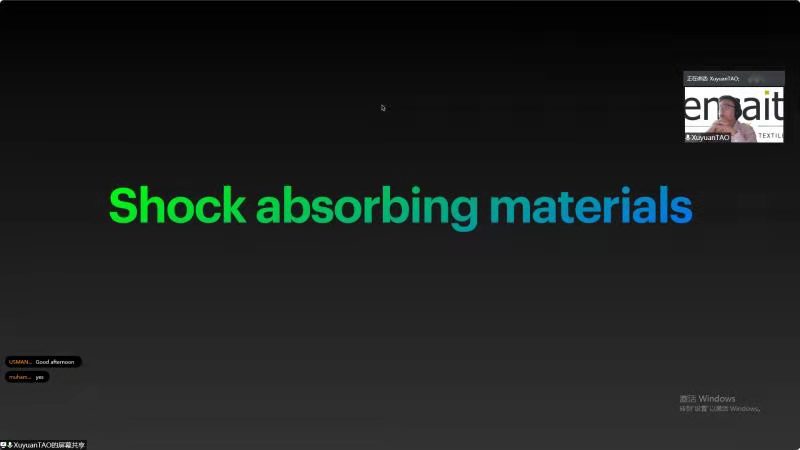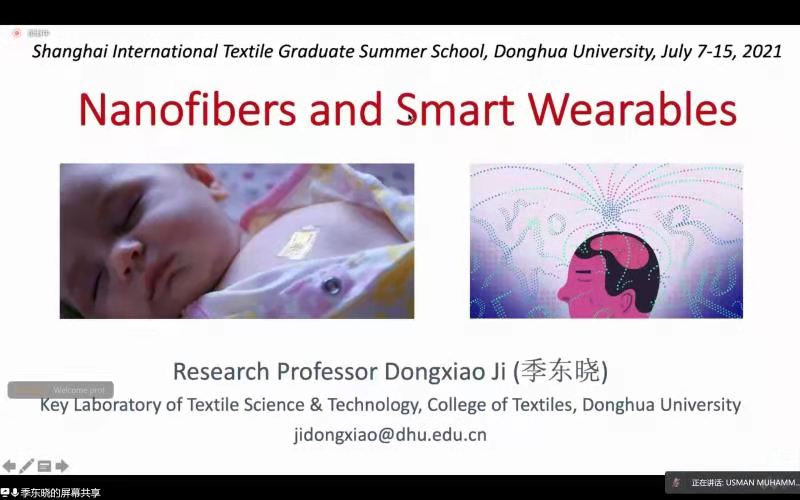2021 Shanghai International Textile Graduate Summer School Teaching Briefing
NO. 2 July 10, 2021 email:itgss2021@126.com
2021 organizing committee of Shanghai Textile Graduate International Summer School, Writing: WANG Xingchi, Translation: Li Shiyun
Through the two day’s learning, students participating all gained and benefited a lot from yesterday’s lectures and are filled with anticipation for the upcoming courses. On the second day of online courses, also the third day of summer school, Prof. Martin W.King from North Carolina State University, Special researcher Ji Dongxiao from Donghua University, Prof. Tao Xuyuan from the National School of Higher Textile Engineers in France, and Prof. Hugh Gong from the university of Manchester sketched a new textile world for us with their professional and novel thoughts.
This day started out with Professor Martin W.King’s lecture -- The Challenges and Repay of Postgraduate Students. First of all, professor expounded the definitions of basic notions such as graduate degree, scientific research, scientific hypothesis and so on. As to the textile science and engineering field, innovative researches and emerging norms were detailed introduced, as well as the challenges our postgraduate students are going to meet. As the slide showed “diligent” and “faith” two words in Chinese, professor commented: “There is no formula other than diligent and faith.” As an old saying goes, genius is nothing but labor and diligence. Strengthening our conviction and being someone down to the earth is the sincere encouragement Martin has given us.
The second class is the Nano-fiber and On-body Intelligent Textiles provided by Ji Dongxiao, introducing the applications of nano-fiber. Above all, electrostatic spinning technology which produces the nano-fiber was firstly introduced. Also, some factors such as spinning parameters, methods that may have impacts on the final fibers were then concisely explained. Taking piezoelectric materials as an example, professor shared the methods of their synthesis, characterization and testing with us, following with the introduction of flexible batteries, wearable sensors and other devices that are made of nano-fibers. At the end of the class, Professor Ji encouraged all the students to join Donghua’s functional textile innovation team and explore the mystery of the nano-fiber together.
In the afternoon, Professor Tao Xuyuan further introduced intelligent textiles to us. He successively expounded the basic principle and applications of various materials like shock absorbing materials, piezoelectric materials, conductive materials and many other types, pointing out the advantages and disadvantages of each. Vivid pictures and videos shown to us broadened our horizon of latest intelligent textiles.
The last class was given by Professor Hugh Gong. He further shared the knowledge of textile testing with us, summing up this topic into two core contents -- statistics and accuracy. To begin with, professor introduced the most important part of statistic -- sampling. There are four main methods of sampling: simple random sampling, stratified sampling, systematic sampling and group sampling. Their specific implementation process as well as respective characteristics were then particularly explained in detail. Further more, Professor Hugh Gong helped us distinguish fault and deviation. He explained the reasons for their occurrence and also taught us how to avoid mistakes as well as reduce deviation in experiments. In addition, relevant knowledge about data variance analysis, interval estimation and distribution inspection were concisely introduced. At last, Professor Hugh Gong emphasized that students should keep it in mind that those parameters and methods are of great importance in statistic.





